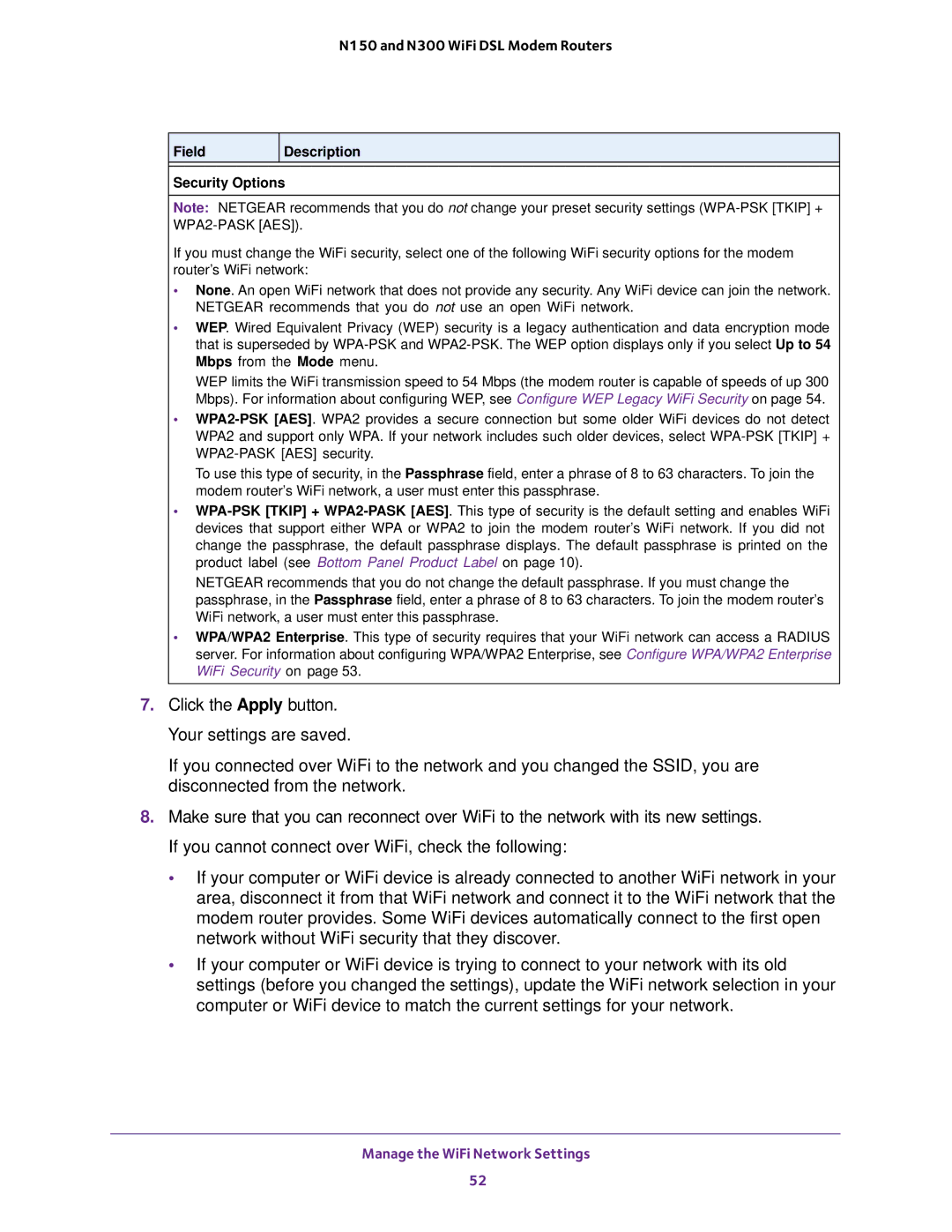
Field
N150 and N300 WiFi DSL Modem Routers
Description
Security Options
Note: NETGEAR recommends that you do not change your preset security settings
If you must change the WiFi security, select one of the following WiFi security options for the modem router’s WiFi network:
•None. An open WiFi network that does not provide any security. Any WiFi device can join the network. NETGEAR recommends that you do not use an open WiFi network.
•WEP. Wired Equivalent Privacy (WEP) security is a legacy authentication and data encryption mode that is superseded by
WEP limits the WiFi transmission speed to 54 Mbps (the modem router is capable of speeds of up 300 Mbps). For information about configuring WEP, see Configure WEP Legacy WiFi Security on page 54.
•
To use this type of security, in the Passphrase field, enter a phrase of 8 to 63 characters. To join the modem router’s WiFi network, a user must enter this passphrase.
•
NETGEAR recommends that you do not change the default passphrase. If you must change the passphrase, in the Passphrase field, enter a phrase of 8 to 63 characters. To join the modem router’s WiFi network, a user must enter this passphrase.
•WPA/WPA2 Enterprise. This type of security requires that your WiFi network can access a RADIUS server. For information about configuring WPA/WPA2 Enterprise, see Configure WPA/WPA2 Enterprise WiFi Security on page 53.
7.Click the Apply button. Your settings are saved.
If you connected over WiFi to the network and you changed the SSID, you are disconnected from the network.
8.Make sure that you can reconnect over WiFi to the network with its new settings. If you cannot connect over WiFi, check the following:
•If your computer or WiFi device is already connected to another WiFi network in your area, disconnect it from that WiFi network and connect it to the WiFi network that the modem router provides. Some WiFi devices automatically connect to the first open network without WiFi security that they discover.
•If your computer or WiFi device is trying to connect to your network with its old settings (before you changed the settings), update the WiFi network selection in your computer or WiFi device to match the current settings for your network.
Manage the WiFi Network Settings
52
